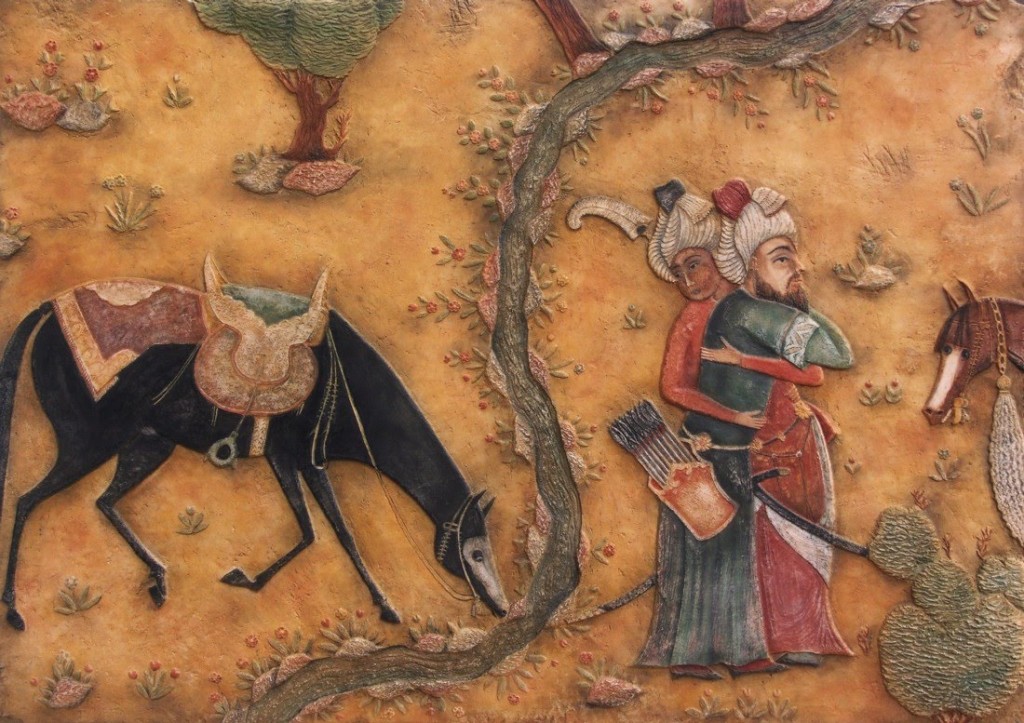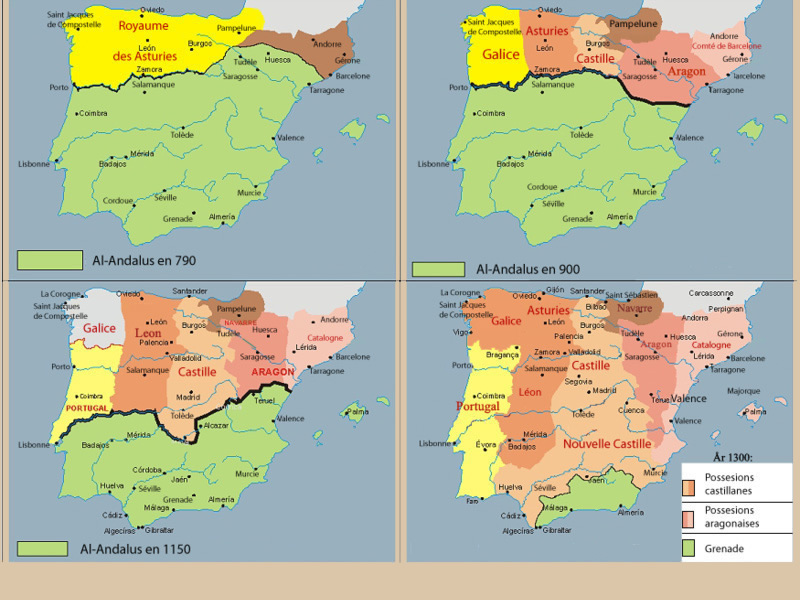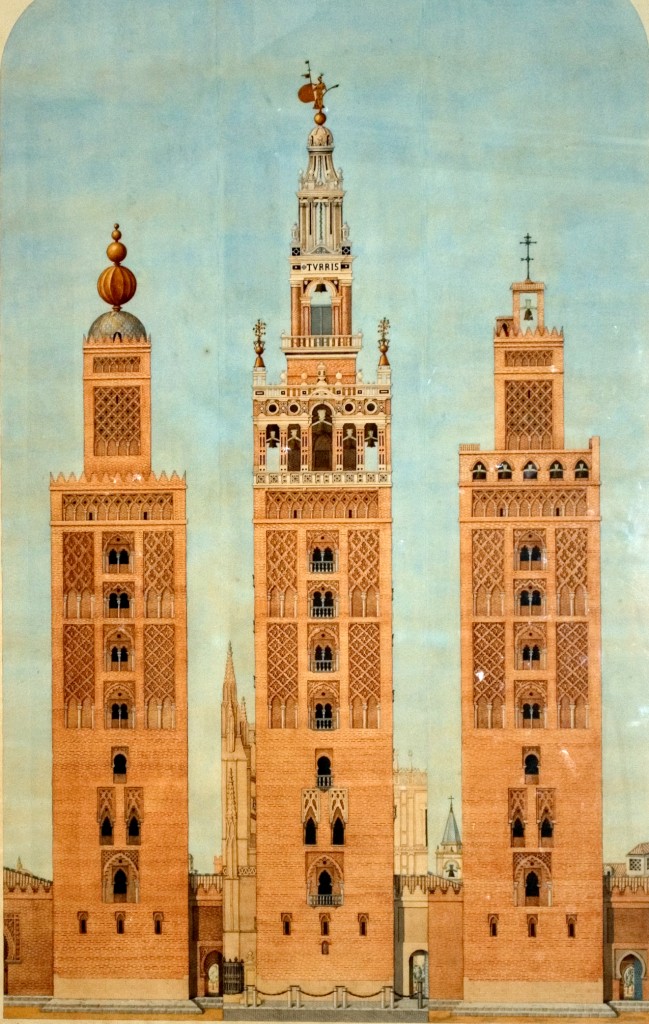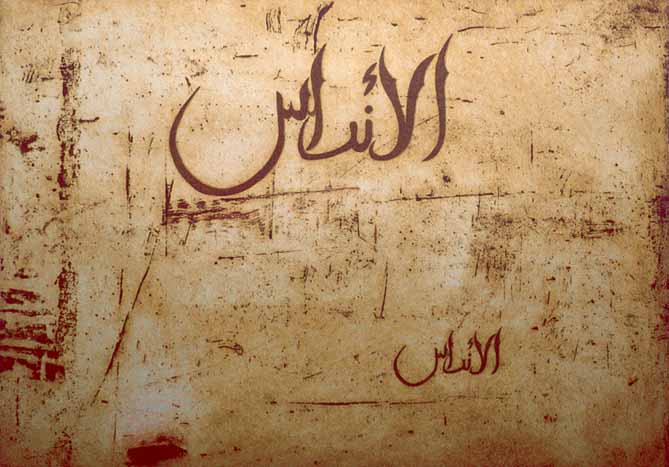_A bit of history
Eight centuries of splendor in Muslim Spain
Land of encounters, a crossroad of cultures, coexistence, prolific interbreeding Al-Andalus, its light shone from east to west. Whilst the region of the middle east was expanding, the first muslims arrived in Spain from North Africa in the Vlll century and shared most of the Iberian peninsular but particularly the area we known as Andalusia. It was the beginning of a new era, of culture, spiritual well being as well as social change unknown until then in Europe. Over a period of eight centuries, from 711 to 1492, Al Andalus was one of the most outstanding civilizations know to mankind with its cities becoming centers of knowledge. Part of this legacy is with us today, land of olive and orange orchards, a place unique, where east and west meet in a successful exchange of cultures (Muslim, Christian and Jew).

This history began in 711, with the arrival at Gibraltar (Jabal Tariq) of Muslim troops led by Tariq ibn Ziyad, there began a period of eight centuries in an area that extended over the whole Iberian Peninsula ( e.g. , the area that is now called Spain and Portugal) with the exception of the Kingdom of Asturias. The Muslims gave the land the name of Al Andalus. At first this vast territory was ruled from Damascus, then capital of the Umayyad Caliphate, but in 750 the Abbasids threw-out the Umayyads from leading the Ummah and established their rule in Baghdad. During the overthrow, the one surviving Umayyad prince, Abdar Rahman I, fled to Al Andalus, and in 1756 was proclaimed Emir of Córdoba. His descendants continued to rule Al Andalus for many generations while reaching its peak of glory and power with Abdu Rahman III. It was he who decided to establish a caliphate and declare himself Amir al-muminin (leader of the faithful). This caliph and his successor, al-Hakam II, achieved an ethnocultural integration between Berbers, Arabs, Hispanics and Jews, and made Cordoba one of the largest centers of knowledge and prosperity in the world.
However, not all of the successors that followed these brilliant caliphs were good at politics. In 1031, after 22 years of civil war, the caliphate was abolished. Different families were taking power in each Andalusian city and this disintegration was the beginning of the end of Al Andalus: with this weakness the Christians were growing and recovering territories. But Islam would remain in Spain for centuries: under the rule of the Almoravid dynasty from North Africa, then the Almohads, also arrived from the Maghreb.
In the thirteenth century, when the advance of the Christians seemed unstoppable, there came the last of the dynasties, Nasri (Nazari), founded by al-Ahmar ibn Nasr, who established his kingdom in Granada. Surrounded from the north by the Christian kings and from the south by the sultans of Morocco, the Nasirí government was unstable. Nevertheless, Granada was a metropolis at this time that welcomed Muslims from around the world which built marvelous palaces, mosques and public baths. Among them, they built the Alhambra, now one of the wonders of the world, and so it remained until today. In 1492, hounded by the Christians and subject to numerous intrigues, the king Abu Abd’Allah surrendered the city to the Catholic Monarchs.
 Colored green, Al Andalus territories in 790, 900, 1150 and 1300.
Colored green, Al Andalus territories in 790, 900, 1150 and 1300.CORDOBA / QURTUBA
From the year 750, Cordoba was the main city of Al Andalus, and between 929 and 1031, it became the capital of the caliphate. During this time it became the most sophisticated, literate and evolved city in Europe with a population of 500,000 compared with only 38,000 in Paris. At that time it had 700 Mosques (one of which was the third largest in the world), 800 hamams (public baths), an advanced urban development system, a diverse and flourishing trade and street lighting (700 years ahead of London or Paris). Its 70 libraries, one of which had over 500,000 manuscripts, employed the best translators and calligraphers of that time. Along with Baghdad, Cordoba was then one of the main centers of knowledge in the Muslim world. In it worked some of the most important philosophers and scientists of the day, as Abu al-Qasim al Zahrawi (Abulcasis) or Ibn Rushd (Averroes).
Reminding us of this glorious time we still have the main mosque, considered today, with all the historic center of Cordoba, a World Heritage Site. Also, still standing is part of the beautiful palace city of Madinat Al Zahra, which housed what can be considered the first parliament in Europe. From where the government managed the taxes that were collected from the far reaches, on the gold and silk routes: from the east, China and India, and from the south, Senegal to the depths of Africa. It only lasted 100 years, but represents the climax of Muslim Spain, the Umayyad Caliphate and its fall.

SEVILLE / ISCHBILIYA
 Grialda, Seville. Its evolution from Almohad minaret.
Grialda, Seville. Its evolution from Almohad minaret.The Andalusian capital awakens a mix of sensations in the traveler that only a few privilege cities in the world can evoke. Muslim dominion was established 712, it was briefly the first capital of Al Andalus, until its transfer to Cordoba. Ischbíliya, Sevilla, the andalusian great city of the Guadalquivir rivaled the other, often revolting against their rulers. Finally, the breakup of the of the Caliphate in the eleventh century made Ischbíliyas splendor grow under the Arab dynasty of the Abbadíes, this court was the largest and most powerful of the independent kingdoms. In the end, the Moroccan Almoravids and Almohads empires built on its importance, and made it become one of the most important cities in Europe of the twelfth century. The end of this brilliant period for Muslims in Ischbíliya was in 1248.
From then, the minaret of the main mosque is still in place (Almohad period) built between 1184 and 1198 and is now known as La Giralda. It is all that remains along with the Patio de los Naranjos. The minarets internal ramps were built so that one could reach its top on the back of a mule. In 1356 an earthquake destroyed the top, it was replaced with a housing for bells.
Another architectural treasure of Seville is the magnificent Alcazar Palace. It’s another good example of the of coexistence between Christians, Muslims and Jews during this period of history. During the last years of the Muslim rule, Sevilla had become an important city for the Christian kings, who maintained excellent relations with the sultans of Granada. It was these Christian kings who entrusted to the Muslim craftsmen the construction of this palace, it was financed by Jewish bankers.
GRANADA / GHARNATA
Granada was the last Muslim kingdom of Al Andalus. Hounded from the north by the Christians and from the south by the sultans of Morocco, it managed to survive for two and a half centuries. It was protected because of a barrier of mountains that surrounds it and a network of strategically heavily fortified cities such as Malaga, Ronda, Almería, and Salobreña.
Under the rule of the Nasrid kings, Granada was one of the richest cities in Spain and also a haven for Muslims fleeing the Christian attack. The magnificent fortified palace of the Alhambra (Al Hamra, Arabic for its red color) begun its construction in 1248 and took over a hundred years. Today it is the oldest Muslim palace to remain in good condition, a world heritage site and one of the most visited monuments in the world.
In 1492, after ten years of siege, King Muhammad XII Abu’Abdullah handed over the keys of the city to the Catholic monarchs, Ferdinand and Isabella, they signed what was called “capitulations of Granada”, safeguarding Muslim rights. A few years later, however, they were expelled. Many flue to Morocco. Those who wanted to stay were forced to convert to Christianity.

TOLEDO / TOLAYTELA
The town of Toledo is 70 kilometers south of Madrid, in the region now known as Castilla La Mancha, the homeland of Don Quixote, is an important city both before and after the Muslim period. It is said that Toledo was one of the places where modern science was founded. The Muslim Tolaytela became a successful interchange point between cultures for nearly three centuries. As the territories of Al Andalus were passed into the hands of the christians, the Muslim scholars were allowed to remain in Toledo in order to collect, translate and develop the skills they had developed in Al Andalus and the rest of the Muslim world, including Persia and the Middle East.
A good example of this cultural exchange is found in the ancient Mosque of Cristo de la Luz (Light of Christ), in whose walls you can read the beginning of the Qur’anic surat A’nnur (Light). The urban structure of Toledo is Arabic, with narrow streets and houses that open into beautiful courtyards, the center for social and family life.





